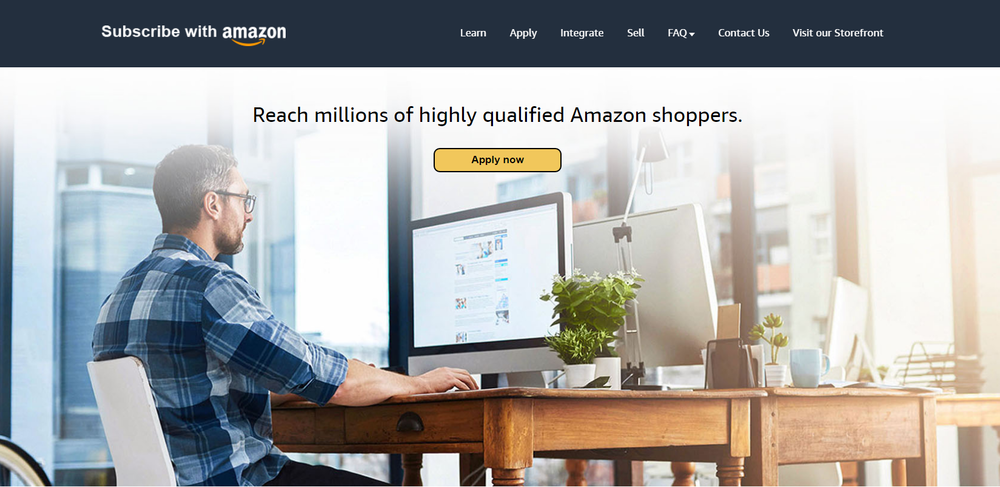In this Amazon Seller's Week in Review, Julie Spear, our Operations Manager, shares her take on recent news highlights and what these could mean for brands selling on the Amazon marketplace.
1. E-commerce and Apparel: An Opportunity Amazon is Leveraging
Last week, Amazon unveiled a new skill for Alexa through Echo Look. With the Echo Look app, customers can record and store selfies of themselves modeling a variety of outfits and styles. Using Style Check, the customer will then receive a feedback score on each look. The looks can be stored in their account for future reference as well. Not only will the customer receive a score for their style, the app will also offer wardrobe and purchase recommendations, acting as a personal stylist of sorts.
This latest development for the Echo underscores Amazon’s commitment to growing the Apparel sector of their business (see last week’s news for details about on-demand apparel). As noted by Natasha Lomas of TechCrunch, this latest development is another link in Amazon’s multi-faceted plan to grow its apparel sector, “This latest Alexa-enabled incarnation means Amazon is no longer primarily a vast, impersonal warehouse that has to be manually data-mined to unearth threads you want to buy; rather it becomes a style destination in its own right; an app that’s savvy about fashion trends and understands personal taste so it can do the leg work and shop for you.”
And all of this is at a time when industry experts and data suggest the retail apparel sector is approaching a tipping point. Research firm L2 has identified the tipping point as the moment when e-commerce owns 20% of retail spending in a specific category. Data suggests that point was achieved in 2016 for clothing and accessories as online purchases accounted for 21% of revenue. Of that 21%, it’s estimated that 6.6% of that went to Amazon.
So what do these advances in Amazon’s technology and data regarding online apparel sales tell us? It suggests that Amazon identifies clear opportunity to grow in this burgeoning e-commerce product category and their timing is on target with customer trends shifting decidedly toward e-commerce over brick and mortar retail. And as with anything related to Amazon and its customers, they’re looking to make the purchasing process as easy as possible. Less friction, more sales for Amazon.
Related: Based on our experience as Amazon consultants, we have identified a few key aspects you should take into account if you’re thinking about launching your apparel brand in the marketplace. Read here.
2. Self Service Subscription Marketplace
Last week, Amazon announced the launch of a self-service subscriptions marketplace for digital subscription providers. Accessing a platform similar to Seller Central, providers can develop a product detail page, set pricing and establish subscription frequency (monthly, annual, etc).

Above: Homepage subscribewithamazon.com
Lovina McMurchy, general manager of Subscribe with Amazon says, “Over the years, Amazon has gained extensive experience in the memberships and subscriptions space, innovating across programs like Prime and Kindle Unlimited. Today, we’re excited to extend our selection by offering subscription businesses a self-service way to make their subscriptions available to millions of Amazon customers.”
Subscription providers already selling on Amazon include SlingTV, Disney Story Central, Dropbox, Texture, eMeals, The Wall Street Journal, Chicago Tribune, The New Yorker, and Consumer Reports. While this offering is currently limited to digital and cloud based subscription services, I wonder if this will one day expand into physical product subscriptions as well.
3. Amazon Prime Grows and Grows!
It looks like Amazon Prime still has room to grow! Reports shared last week by Consumer Intelligence Research Partners (CIRP) indicate Prime has 80 million members, up from 58 million the same time last year. That is an increase of 38% in one year!
CIRP added further context to these figures sharing an estimated 63.6% of all US households have a Prime membership. A growing sector of this group is the number of monthly Prime subscription members. About 26% of Prime subscribers in the US are monthly, up from 21% last year.
Josh Lowitz, partner and co-founder at CIRP said, “We think that the monthly membership option appeals to the later Prime adopters, with a smaller, potentially temporary commitment, that ultimately yields a long-term commitment. With smaller dollar, single-month decisions, the new plan winds up helping with retention rates, which already average 85% for a member renewing after their first year [of having a Prime membership].”
This increase is good news for Amazon and brands selling FBA, or wholesale to Amazon, as Prime members spend on average $1300 per year as compared to the $700 annually for non-Prime shoppers.
Until next week's round of Amazon Seller's Week in Review, join us in our private community for brand owners and Channel Managers on Facebook: Amazon Chanel Mastery for Brands. We share insider tips about e-commerce and selling on Amazon. This is where you can get to know us, and your peers, a little better.
.png)
